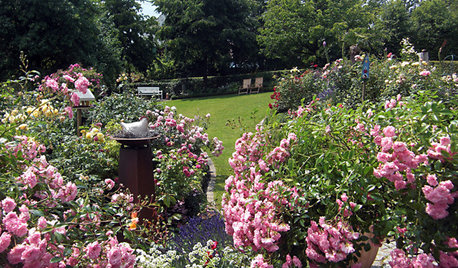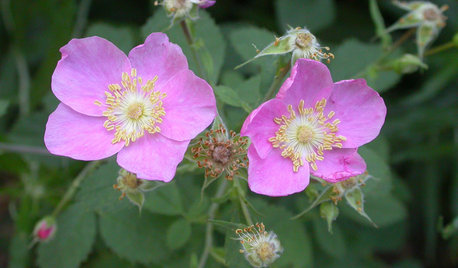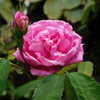What does "VID" mean - after the name of a rose?
vettin
10 years ago
Related Stories

INSIDE HOUZZHow Much Does a Remodel Cost, and How Long Does It Take?
The 2016 Houzz & Home survey asked 120,000 Houzzers about their renovation projects. Here’s what they said
Full Story
LIFEHouzz Call: What Does Summer Look Like at Your Home?
Kids, water, sunshine, backyards, cold drinks — share photos of what summer at home means to you
Full Story
FUN HOUZZDoes Your Home Have a Hidden Message?
If you have ever left or found a message during a construction project, we want to see it!
Full Story
WINTER GARDENINGPruning Secrets for Exquisite Roses
Encourage gorgeous blooms year after year with this time-tested advice on how to prune your rosebush in winter for health and shape
Full Story
FRONT YARD IDEASBefore and After: Front Lawn to Prairie Garden
How they did it: Homeowners create a plan, stick to it and keep the neighbors (and wildlife) in mind
Full Story
GARDENING GUIDES5 Sweet to Spirited Pink Roses for an Enchanting Garden
Whether you go demure or daring, there's a pink rose here to make you flush with garden pride
Full Story
GARDENING GUIDESWhat Kind of Roses Should You Grow?
Want to add the beauty of roses to your garden? Find out which ones, from old-fashioned to modern, are right for you
Full Story
GARDENING GUIDES6 Wonderfully Easy Roses for Any Gardener
Look like an expert even if you're just starting out, with these low-maintenance gems of the rose world
Full Story
GARDENING GUIDES6 Captivating Roses for an Alluringly Fragrant Garden
Perfume your garden with aromas from richly spicy to lightly sweet, without sacrificing an inch of color
Full Story
GARDENING GUIDESGreat Design Plant: Rosa Californica
Plant California wild rose for easy care and a touch of romance in your native garden
Full StorySponsored
Central Ohio's Trusted Home Remodeler Specializing in Kitchens & Baths
More Discussions










jannorcal
jannorcal
Related Professionals
Danbury Landscape Architects & Landscape Designers · Simpsonville Landscape Architects & Landscape Designers · Rancho Cordova Landscape Architects & Landscape Designers · Washington Landscape Architects & Landscape Designers · Maple Valley Landscape Contractors · Brownsville Landscape Contractors · Cliffside Park Landscape Contractors · Florham Park Landscape Contractors · Suitland Landscape Contractors · West Chicago Landscape Contractors · Whitehall Landscape Contractors · Clinton Swimming Pool Builders · Framingham Siding & Exteriors · Palatine Siding & Exteriors · Weymouth Siding & Exteriorsdublinbay z6 (KS)
Vicissitudezz
malcolm_manners
Tessiess, SoCal Inland, 9b, 1272' elev
malcolm_manners
Vicissitudezz
henry_kuska
malcolm_manners
sandandsun
henry_kuska
prairiemoon2 z6b MA
Tessiess, SoCal Inland, 9b, 1272' elev
Tessiess, SoCal Inland, 9b, 1272' elev
prairiemoon2 z6b MA
caldonbeck
henry_kuska
henry_kuska